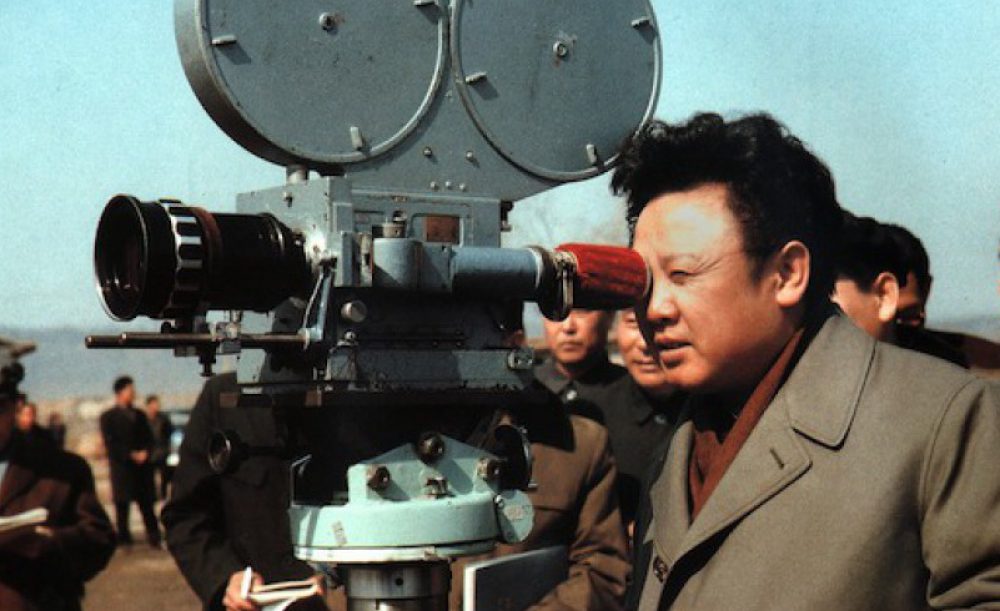Through a comparison of Godzilla and Pulgasari, we have drawn the following conclusions regarding North Korean cinema:
- North Korean national cinema can be defined as a manifestation of the juche ideology.
As Andrew Higson notes, “a national cinema seems to look inward, reflecting on the nation itself, on its past, present and future, its cultural heritage, its indigenous traditions, its sense of common identity and continuity,” (Higson, 2000: 60).
The national cinema of North Korea is specifically created for the North Korea people as a representation of the nation’s ideology, beliefs, and pride of the Kim regime. Most notably, North Korean national cinema reflects upon the ideology of the nation. The components of juche ideology are evident in the film Pulgasari. North Korea reinterpreted a film which was originally a political message about the dangers of nuclear warfare into a film that warns against the evils of capitalism. One of the central components of juche is the concept that people are the masters of the Revolution and the creators of their own fate. This theme is of central importance to the film in that the village people take it upon themselves to rise up against the evil King. North Korean Cinema also looks inward in that political leaders such as Kim Jong-il have been directly involved in the cinema making process. Thus, through this positionality, North Korean cinema is a direct product of the state ideology.
Higson also notes that “On the other hand, national cinema seems to look out across its borders, asserting its difference from other national cinemas, proclaiming its sense of otherness,” (Higson, 2000:60).
This is evident in the comparison of Godzilla and Pulgasari. The creators of Pulgasari took a Japanese film and reinterpreted it in such a way as to portray the cultural and political characteristics specific to North Korea. A specific example from these films is the ways in which the characters of Godzilla and Pulgasari are differentiated. In Godzilla, the monster is seen as an evil character which needed to be captured and rid of. However in Pulgasari, the giant iron-eating monster is a savior to the townspeople and aides in their revolution. In ways such as this, North Korean cinema differentiates itself from that of its counterparts.
2. There is not only a very limited communicative space in North Korea through which distribution and reception of films can occur, but this communicative space is tightly controlled by the state.
Social communication theory is of particular importance when examining the relationship between the nation and communication in North Korea. This theory explores the efficiency of communication among individuals in a given nation or nation-state and the ways by which these interactions shape the nation. Philip Schlesinger describes social communication theory as the ways in which “shared cultural and communicative practices strengthen the identity of a group by creating boundaries,” (Schlesinger, 2000:18). Examining the production, distribution, and consumption of film in North Korea and how it constitutes the national collectivity is particularly perplexing.
Firstly, the communicative space in North Korea is significantly limited due to media restrictions put in place by the government. The state essentially controls all forms of media and mass communication, thus deciding what information gets disbursed across the nation. Furthermore, citizens of the DPRK have very limited access to mechanisms which would allow them to create a communicative space; for instance, North Korea has a mere 8 internet hosts (computers which are directly connected to the internet) compared to Japan, which has over 63 million internet hosts (CIA World Factbook). This alone shows how limited mass communication is in North Korea.
Secondly, what little social communication that exists in the DPRK is controlled by the state. Even if people are able to find a channel through which to communicate, they are barred from discussing certain topics and viewpoints. For instance, one cannot speak negatively of the Kim regime; doing so could result in spending the rest of one’s life in a labor camp. A specific communicative space which is tightly monitored is the film industry. Dr. Mark Morris of the University of Cambridge’s Asian studies states that in North Korea “Its not a matter of buying your ticket to see your favorite film – you’d be shown a schedule of what will be screened and generally it’s a good idea to show up.” He adds that at film screenings, an officer would be present and ask viewers to give an evaluation of the film, during which it is important to pick up on political messages in the film (Cheung, 2014).
Thus, social communication is relatively obsolete in North Korea. The communicative space there is carefully restricted and operated by the government, resulting in a community which is culturally homogenous.
